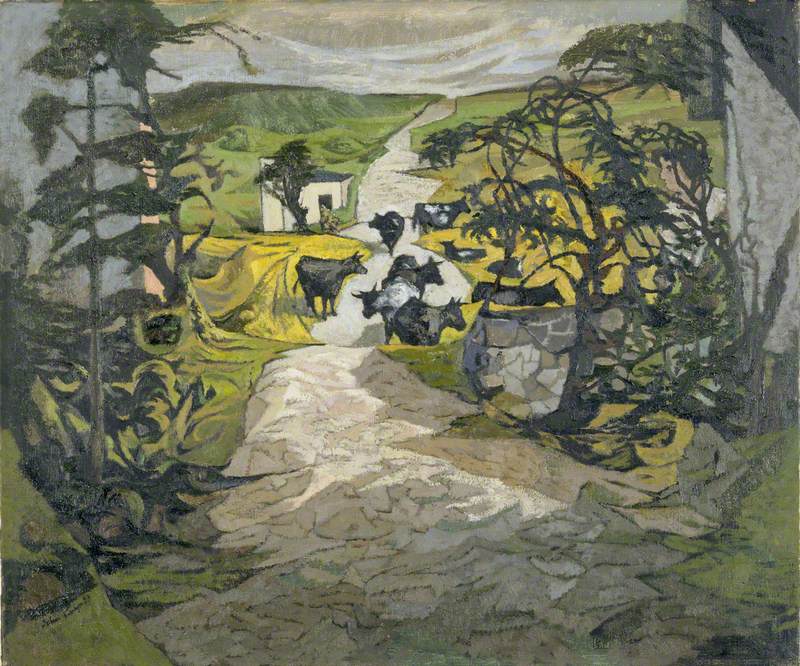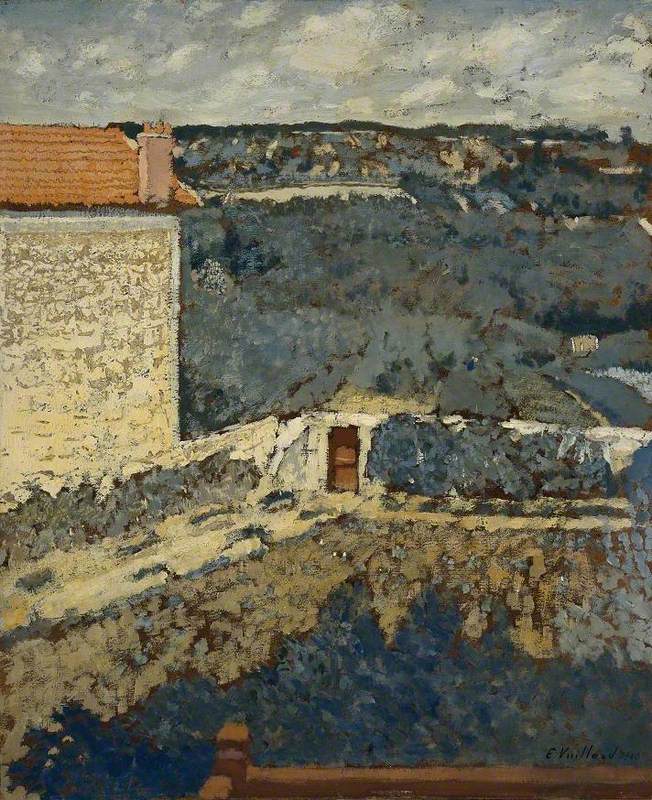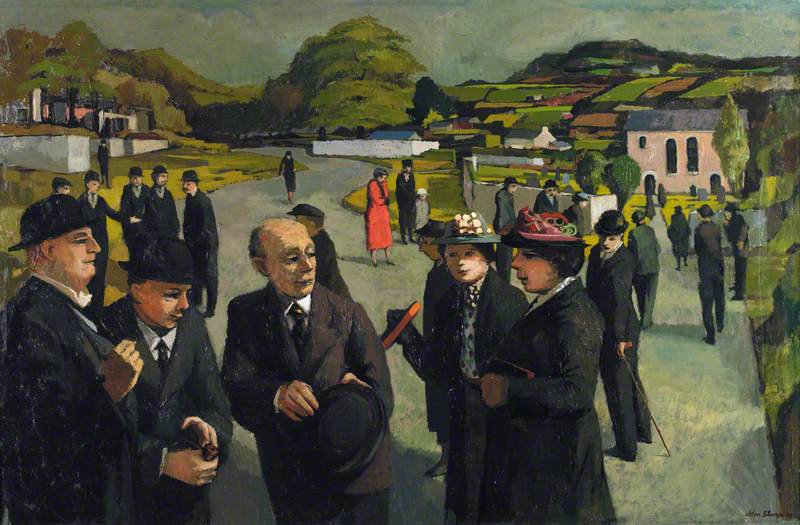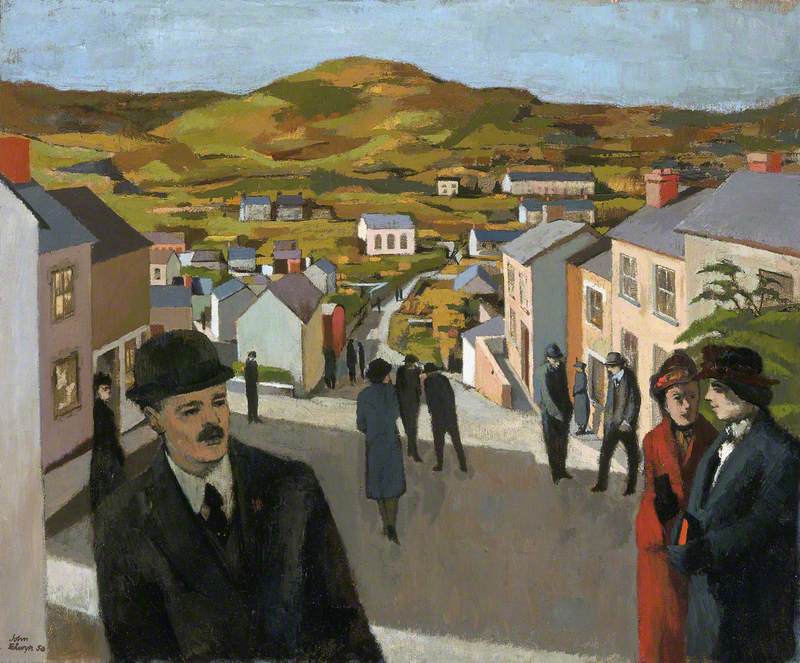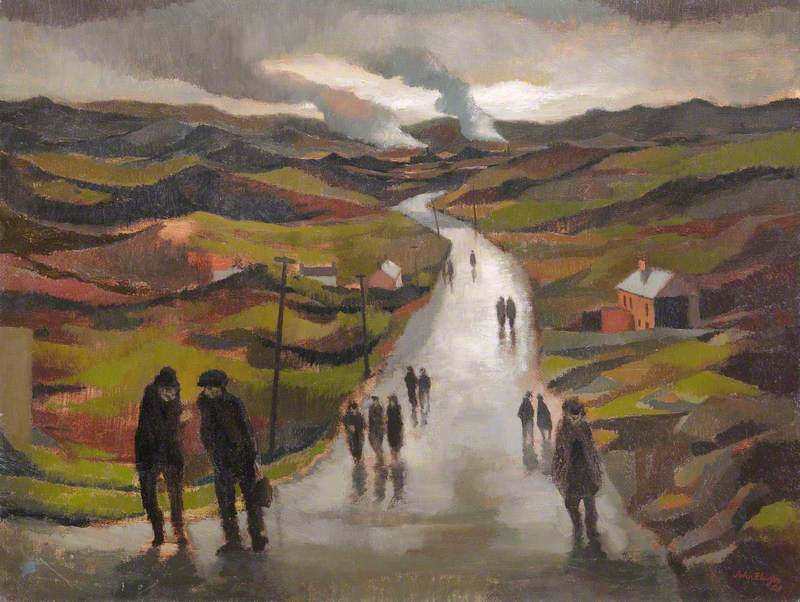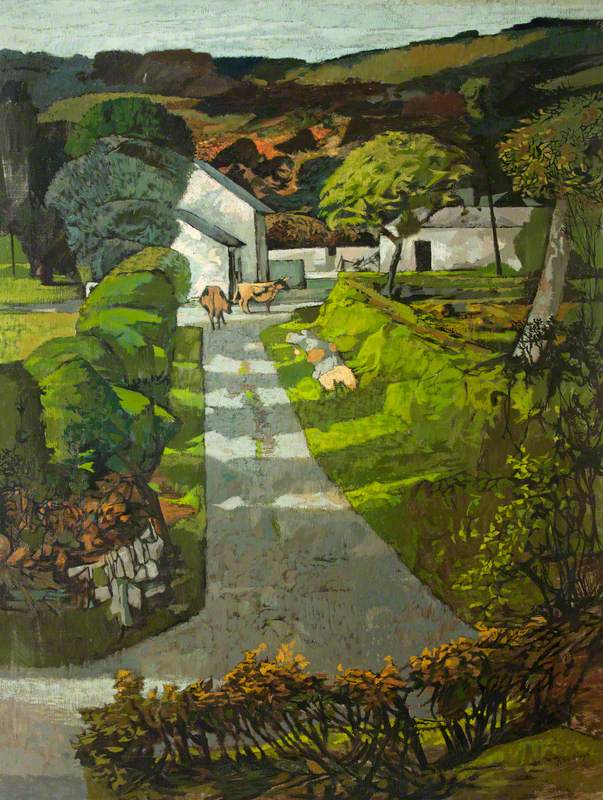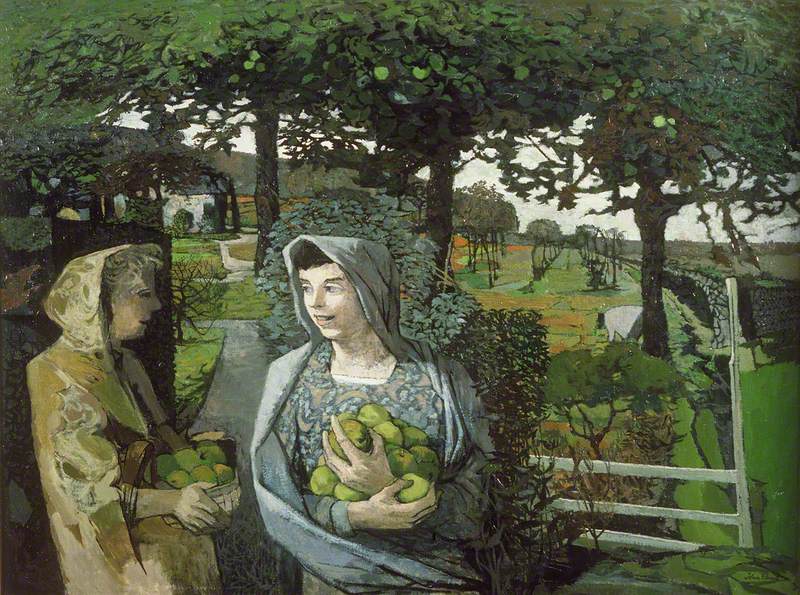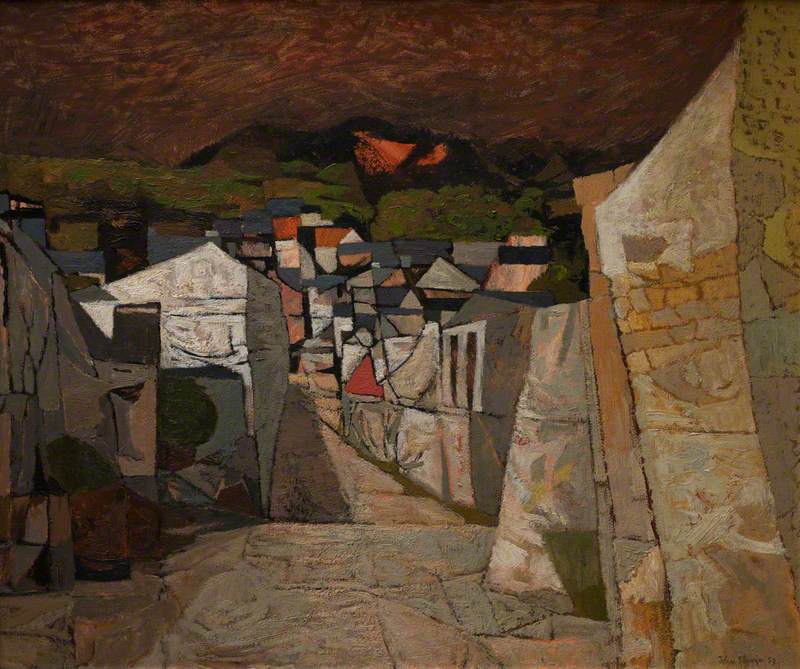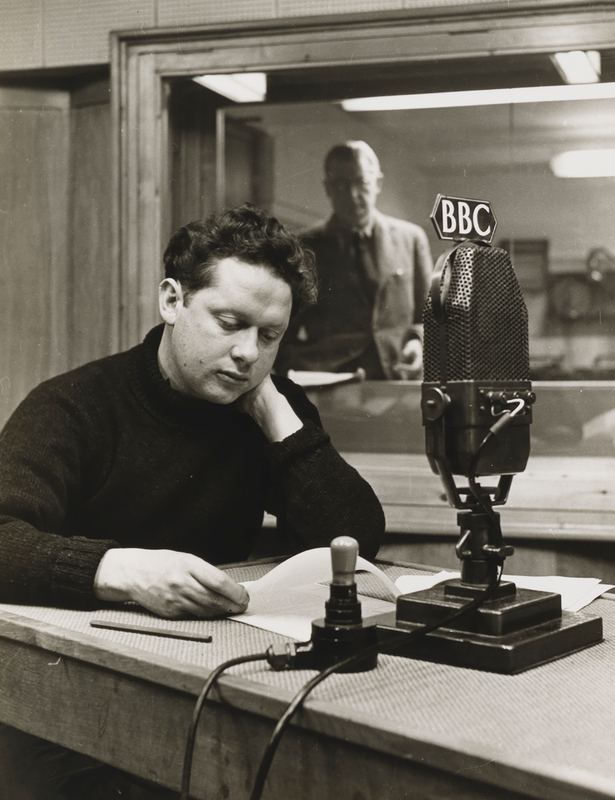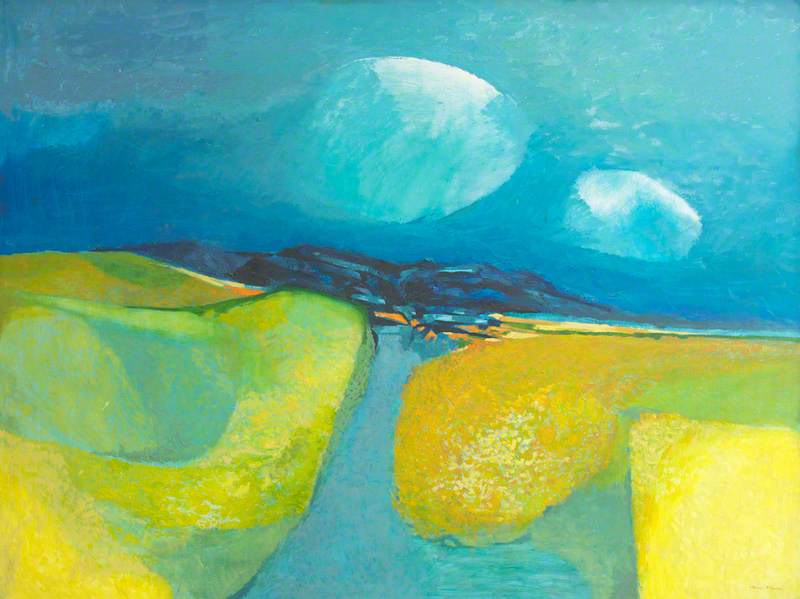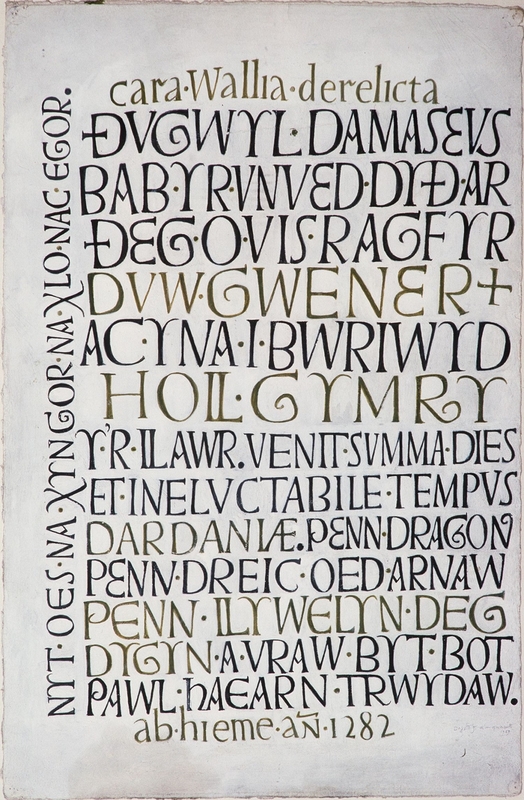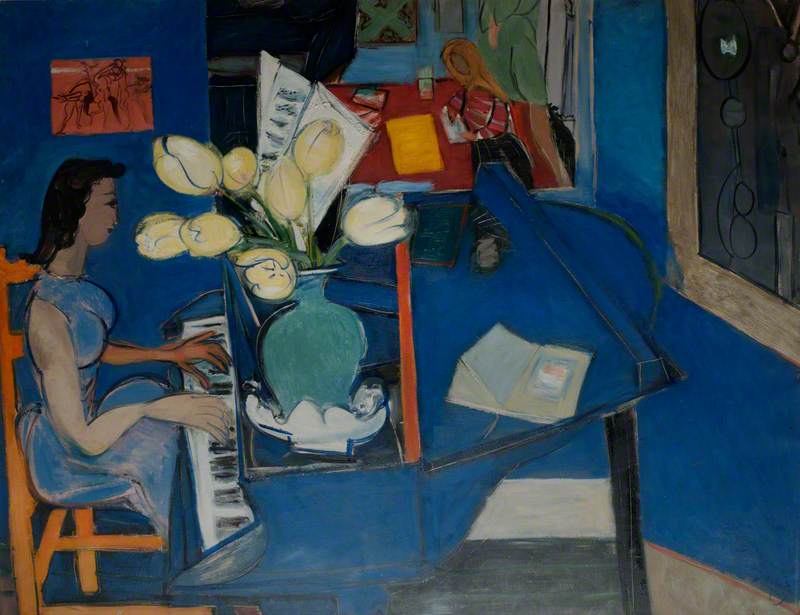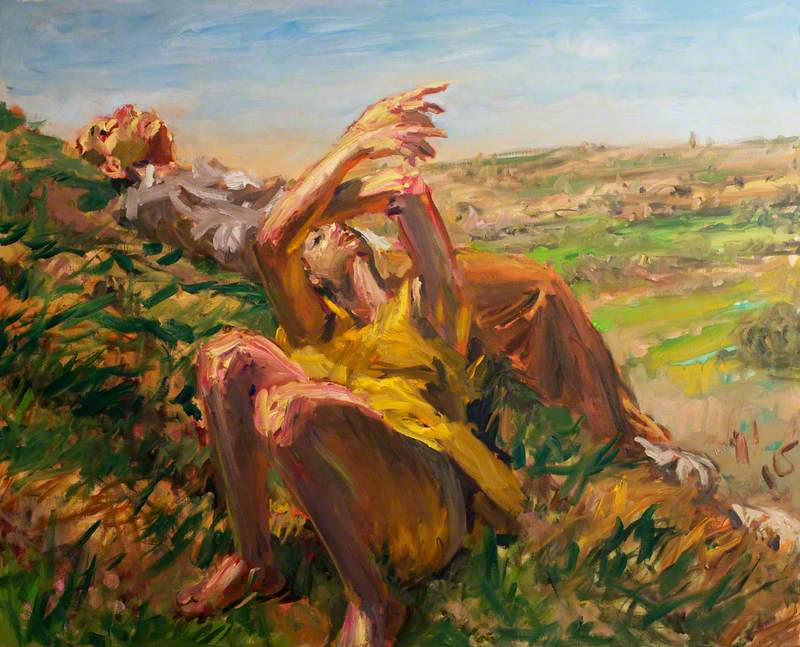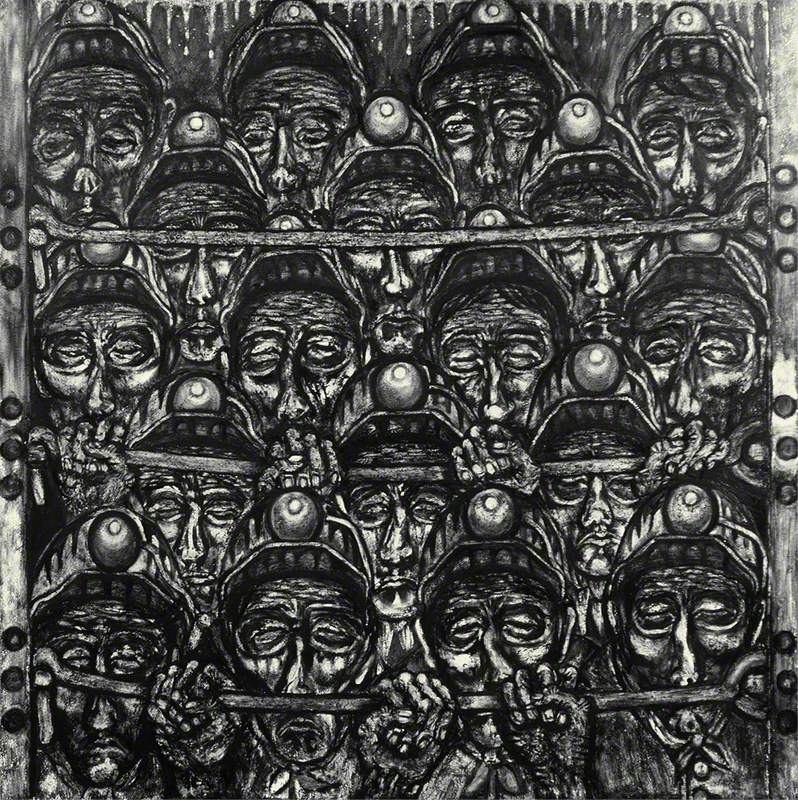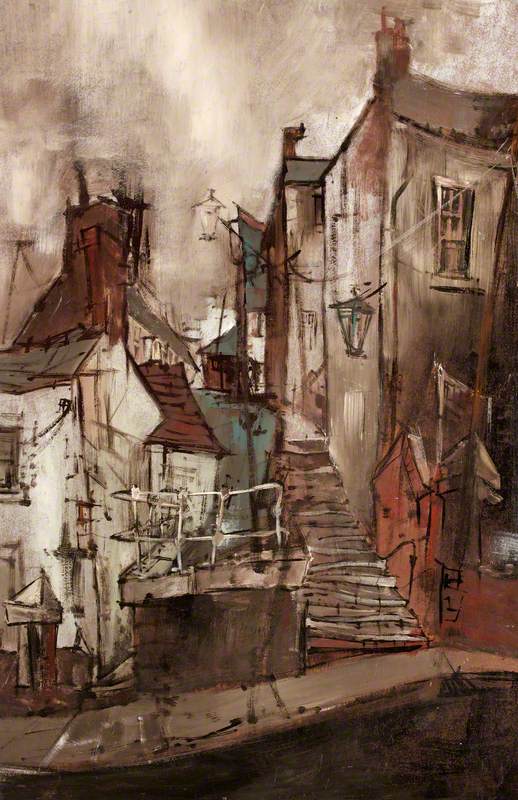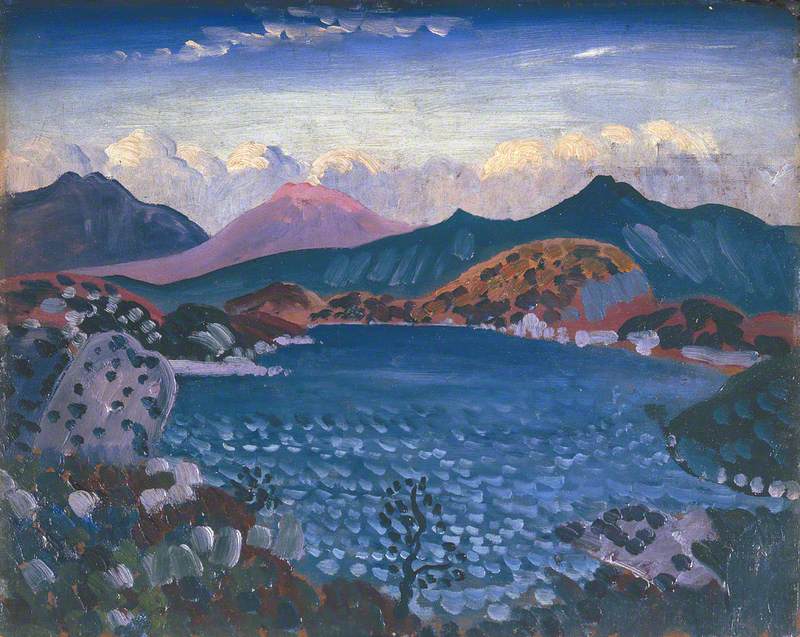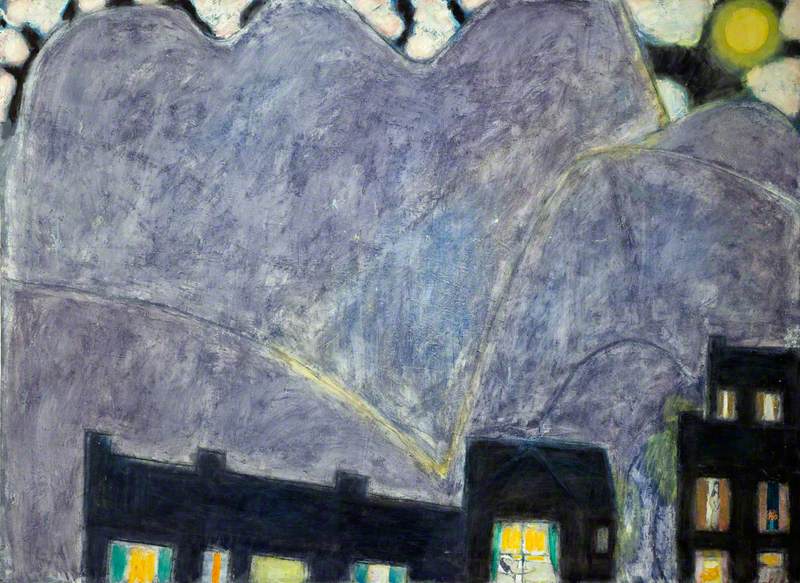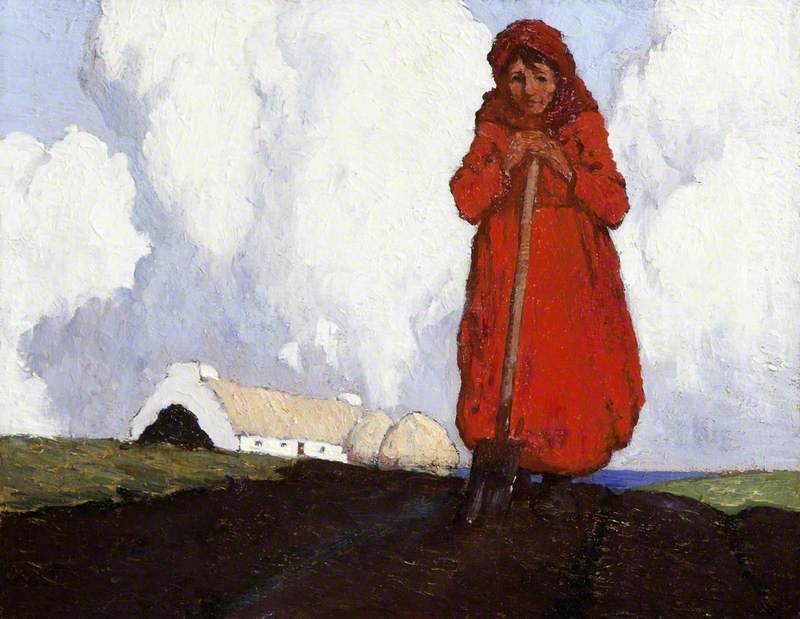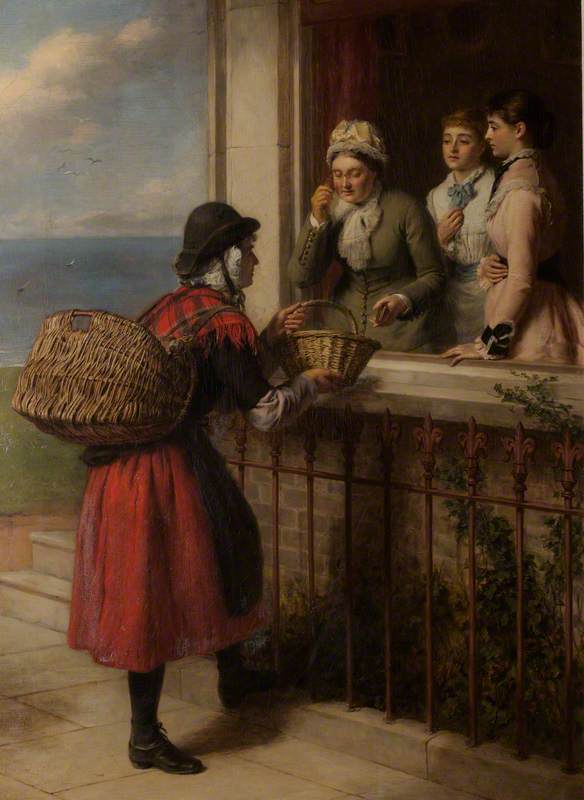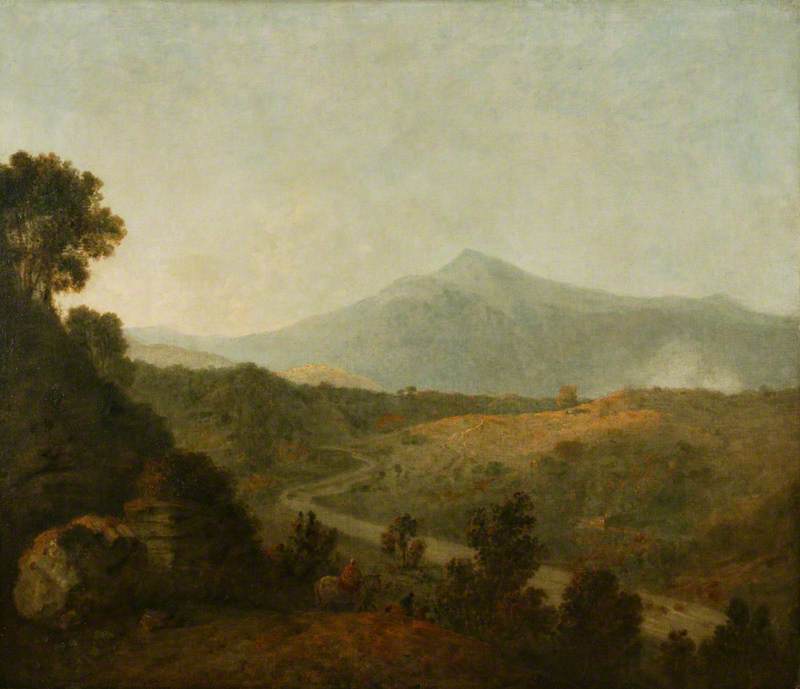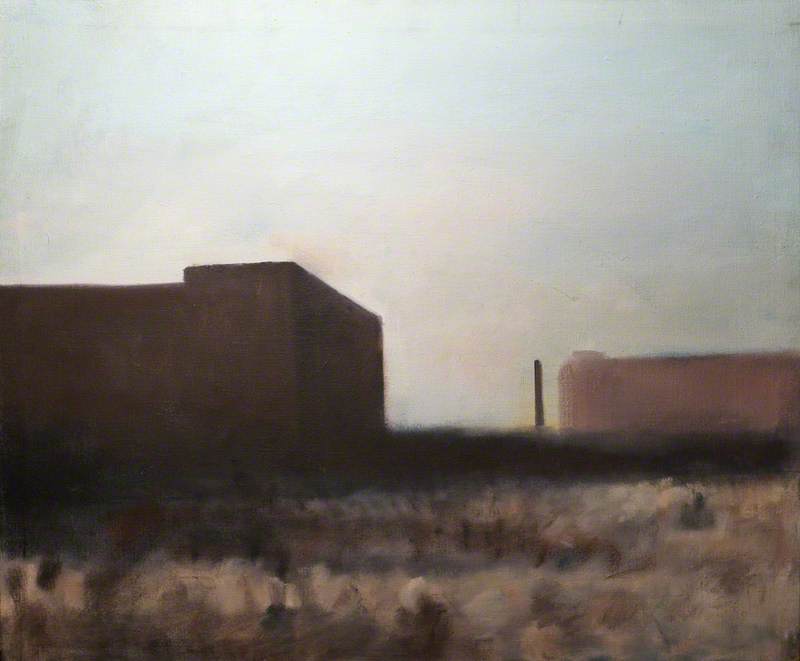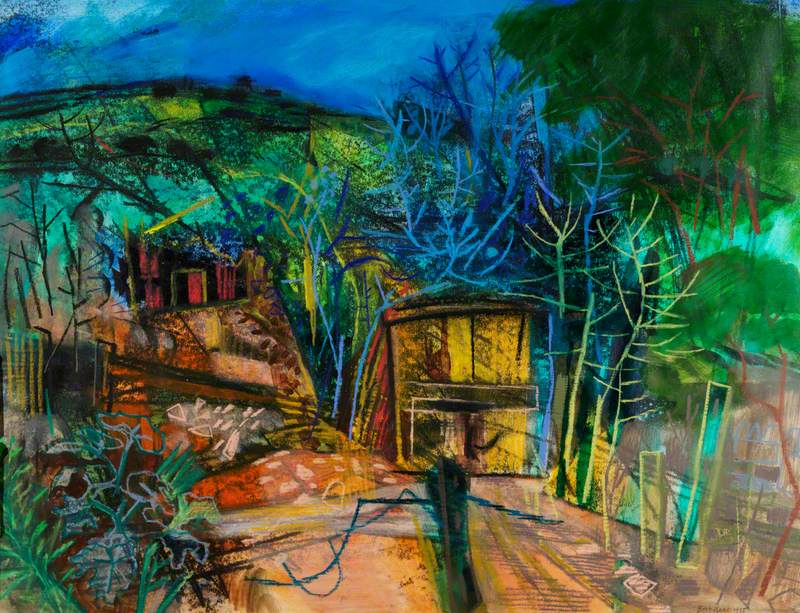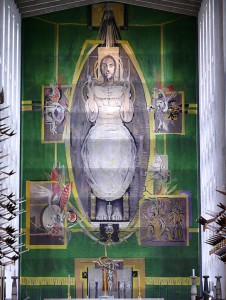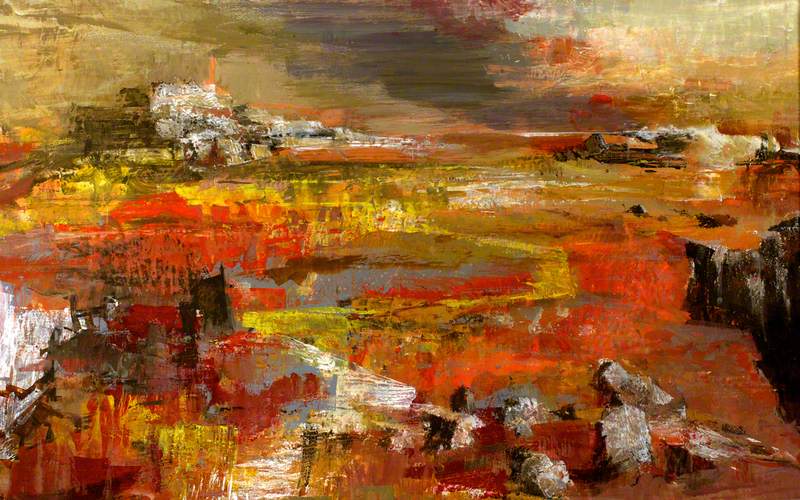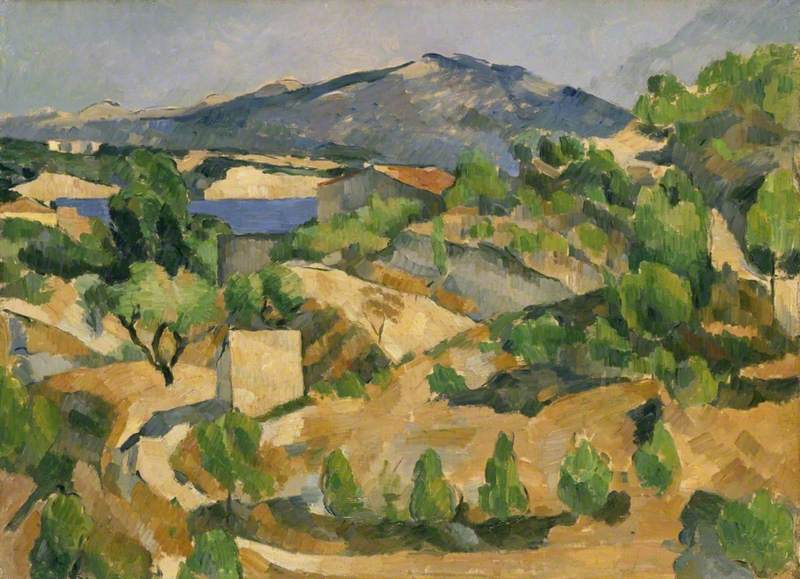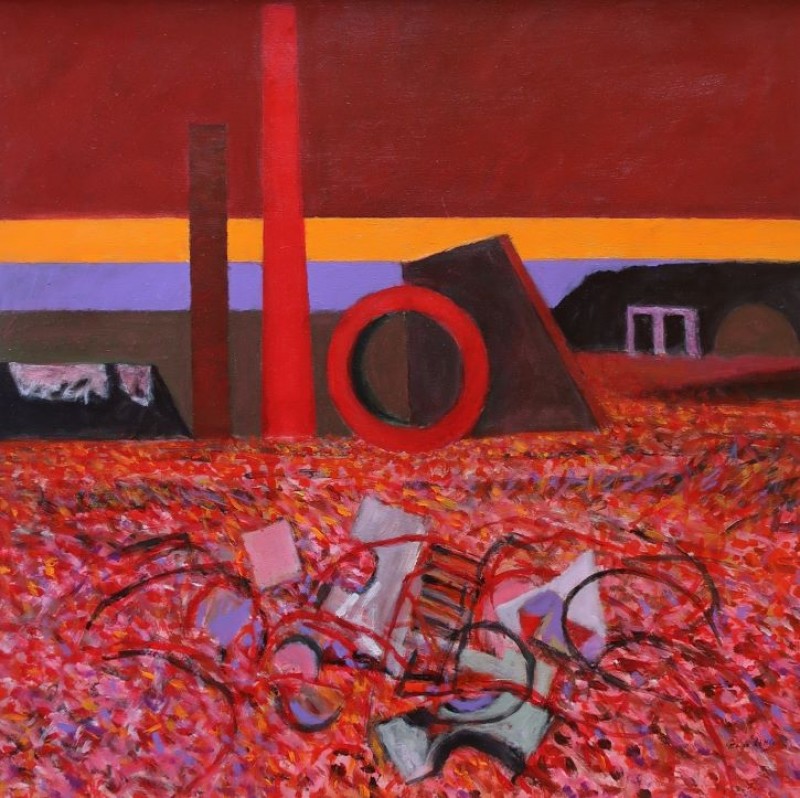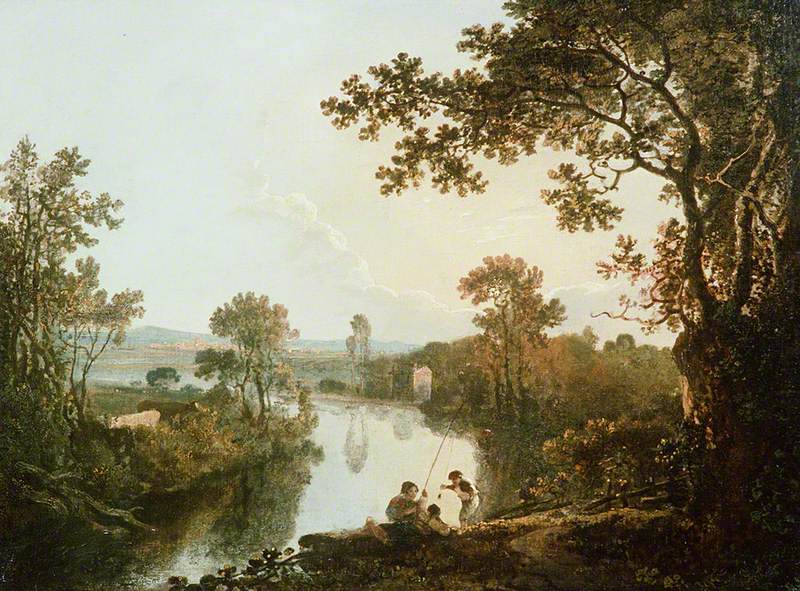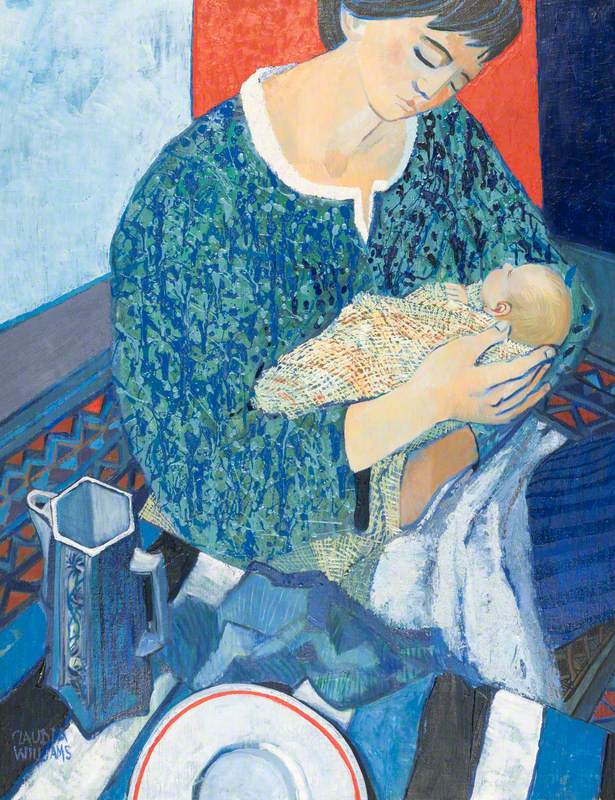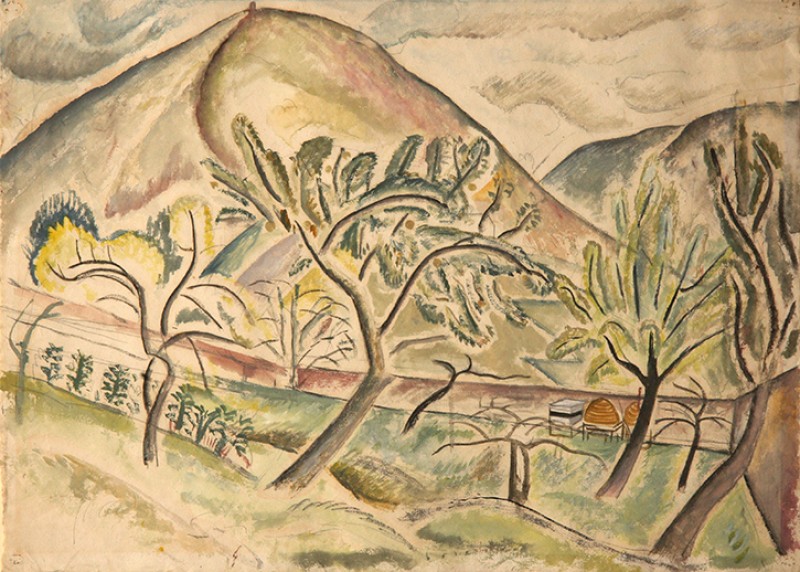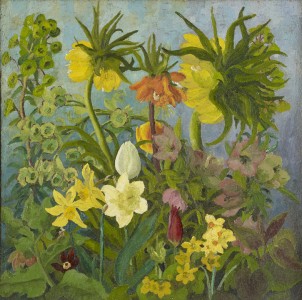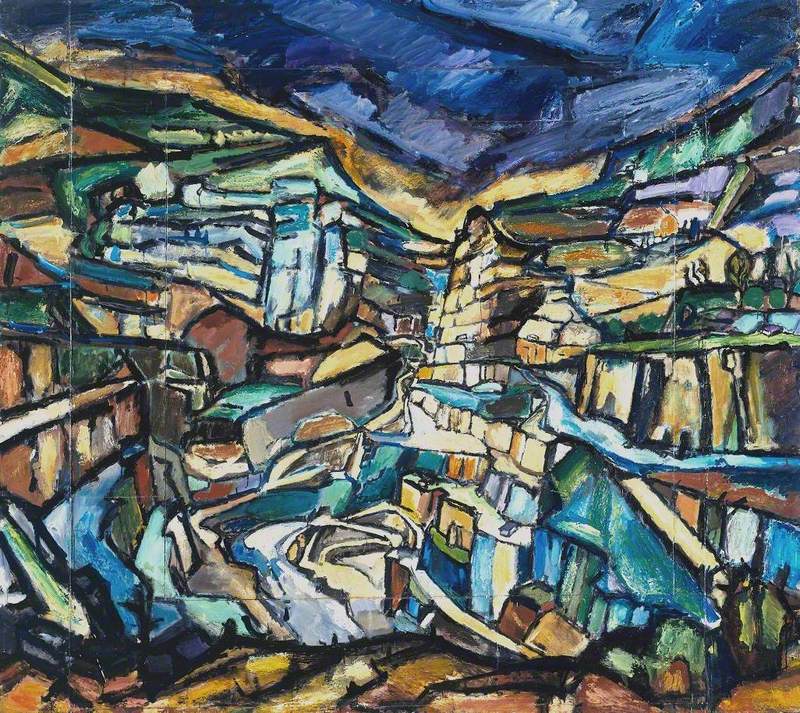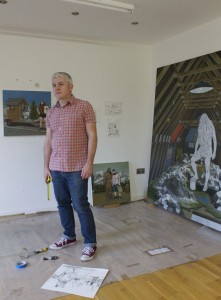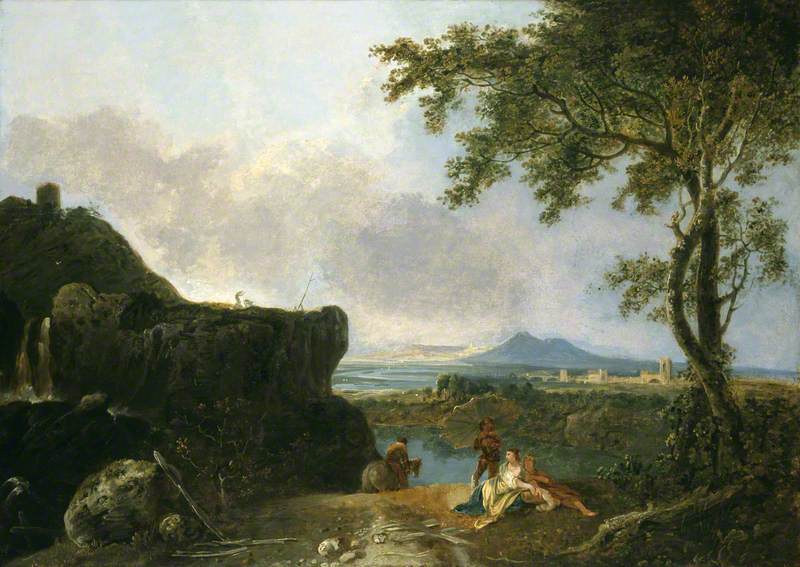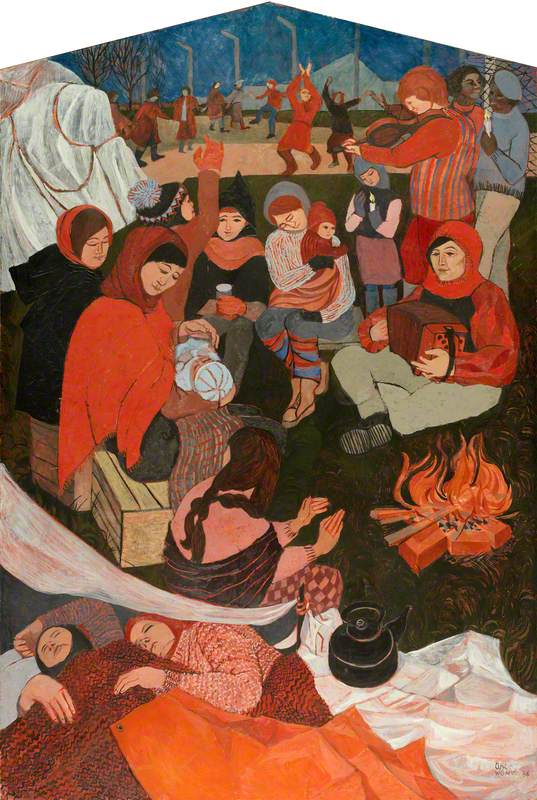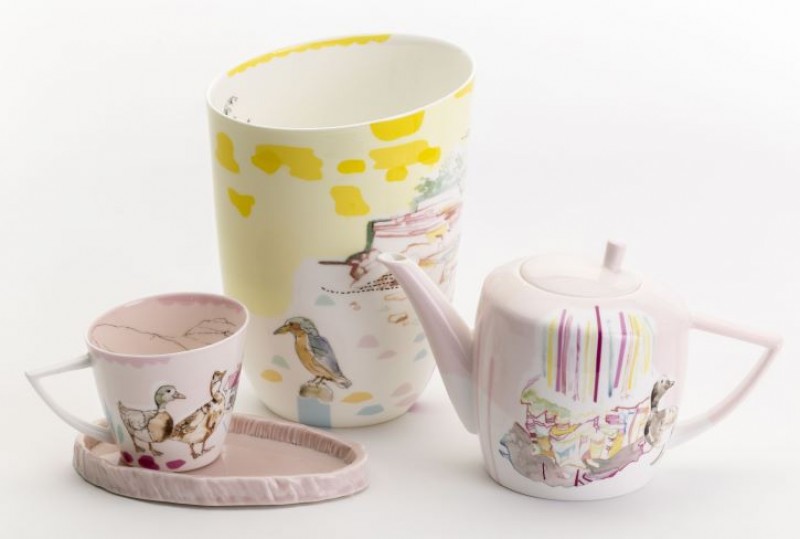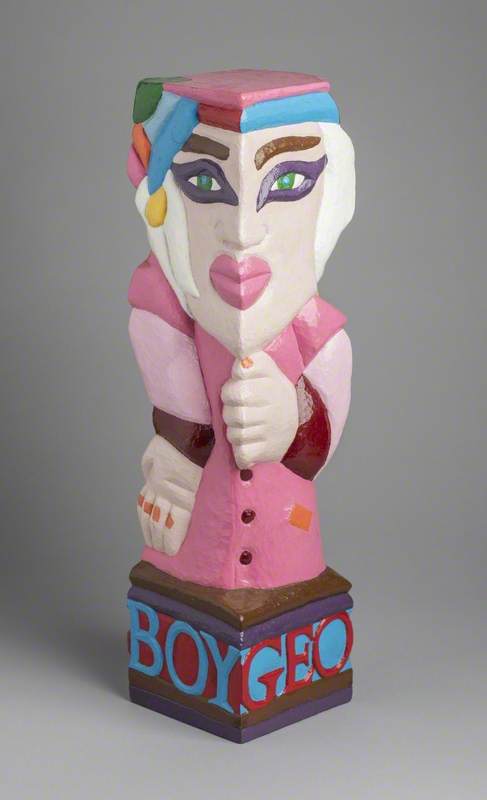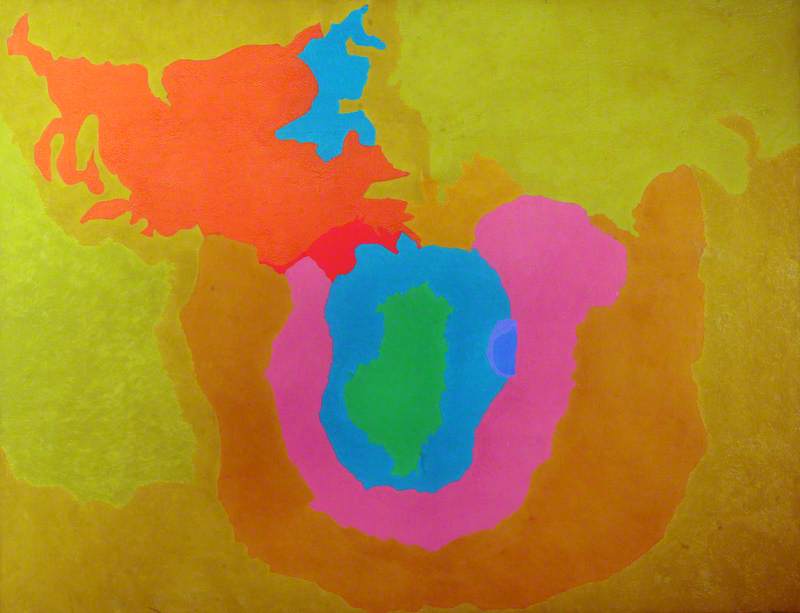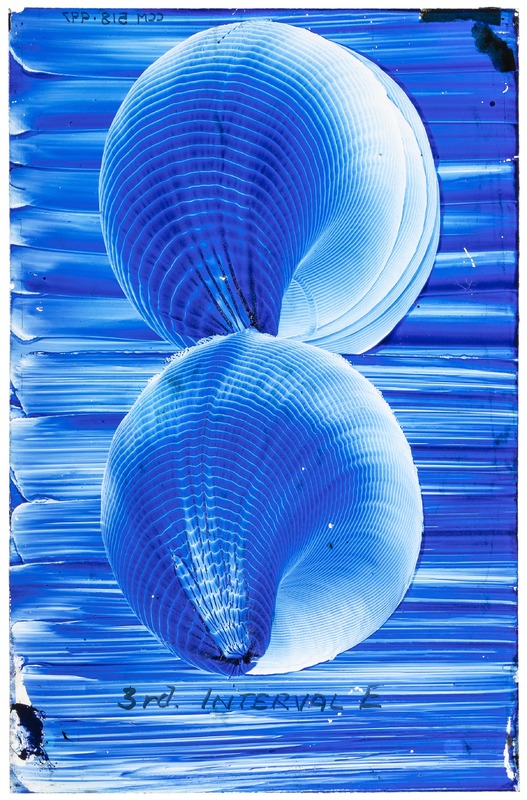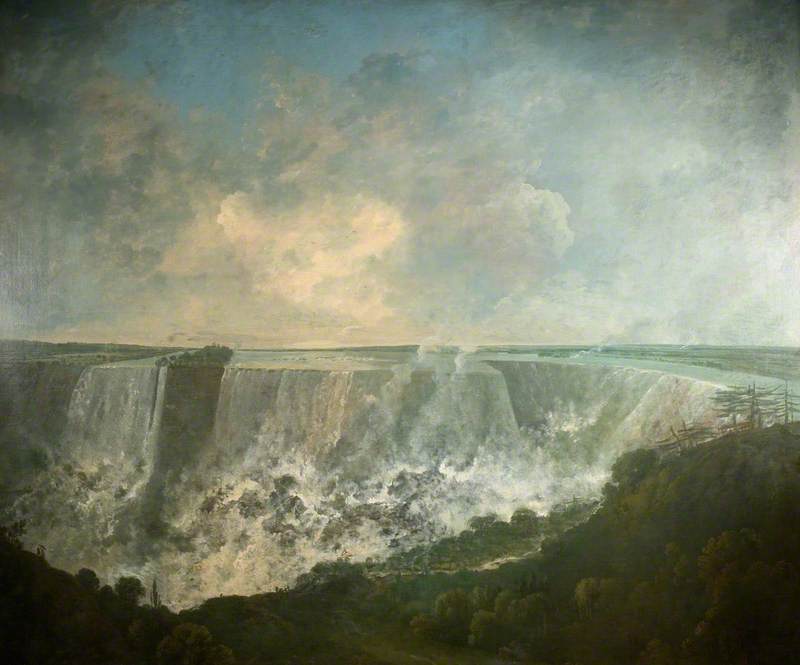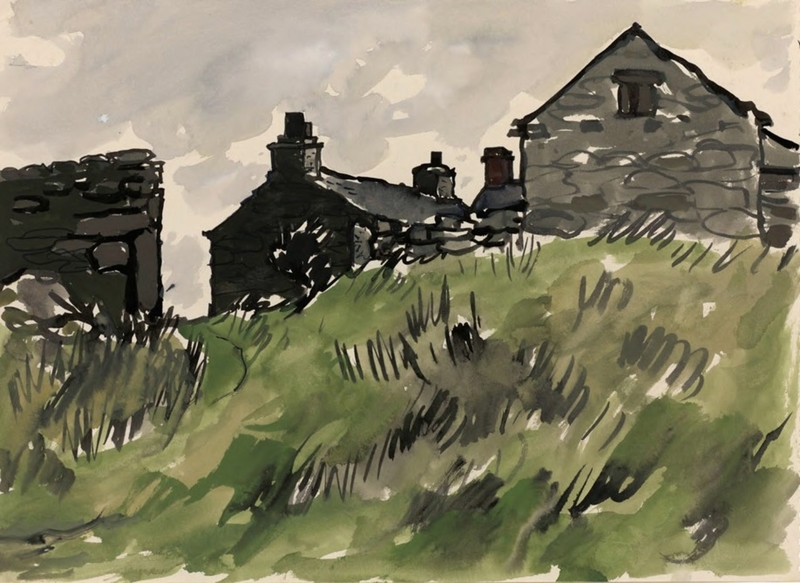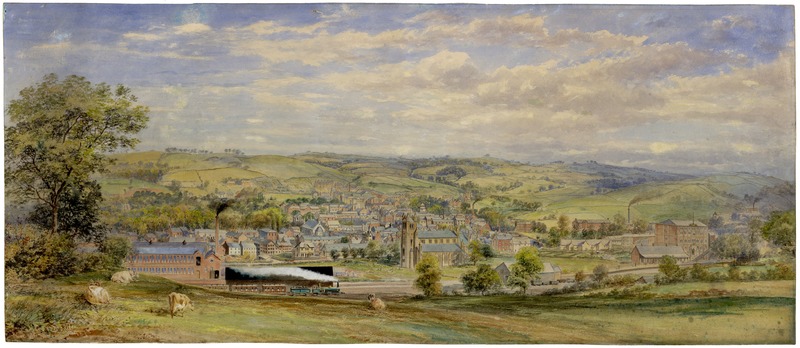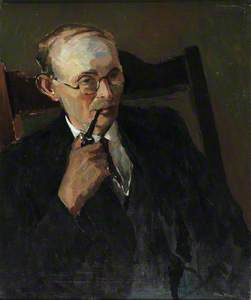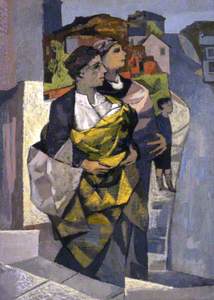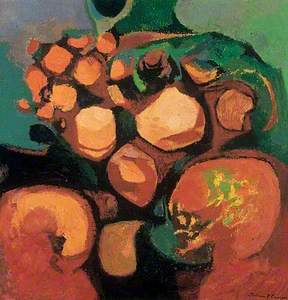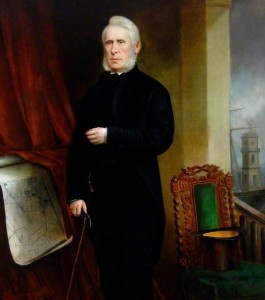While John Elwyn's artworks can tell us much about Wales and its landscapes, its people and the Welsh way of life, they also convey a great deal about their creator and his worldview. For seven decades John Elwyn drew on his experience and understanding of the working life of farmyards and cattle pastures in his native south Cardiganshire.
William John Elwyn Davies was born in 1916. His father was a weaver at Adpar on the Cardiganshire banks of the River Teifi. On the opposite banks of the Teifi stands Newcastle Emlyn in Carmarthenshire, then a staunchly Welsh-speaking and Nonconformist chapel-going community.
John Elwyn trained at Carmarthen and Bristol then the Royal College of Art in London where his studies were interrupted by the Second World War. In 1948, he moved to Hampshire to teach in Portsmouth and then at Winchester School of Art. There, a fond nostalgia for his homeland – which in Wales we call hiraeth – resulted in a series of anecdotal paintings that drew on his boyhood. Realising that he was unlikely ever to 'push back the frontiers of modern art', John Elwyn began to 'write stories in paint' about the rituals associated with chapel-going in the 1920s.
Up-to-Date Gossip before the Meeting
1949
John Elwyn (1916–1997) 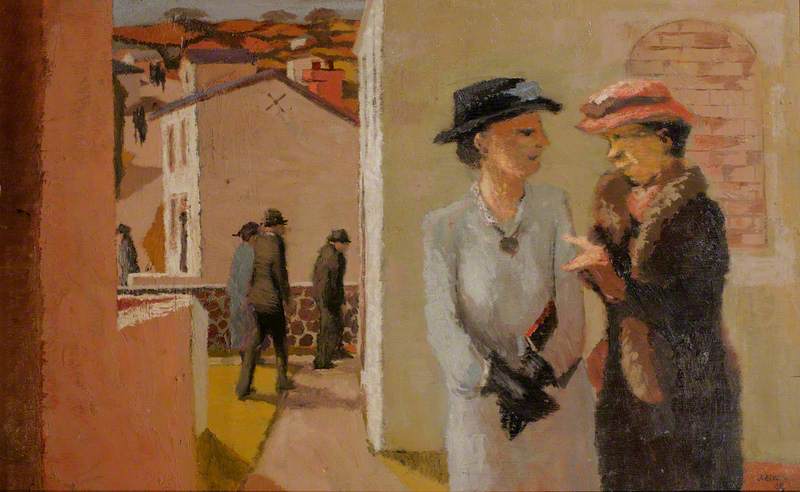
As stalwarts of Ebenezer Welsh Congregational Chapel, John Elwyn's family attended Sunday services and seasonal festivals as well as weekday prayer meetings, cymanfaoedd canu, debating societies and vestry tea parties.
Outside the chapel, gossip was exchanged. Two people, and you have a conversation, John Elwyn opined, three, and you have an argument: 'there might have been a special hymn sung that day,' and 'this caused two black-bowlered hymn enthusiasts to stop and sing – sotto voce – in the middle of the road, fingering the red-edged pages of their hymn book.'
Two Men Outside a Chapel
c.1950
John Elwyn (1916–1997) 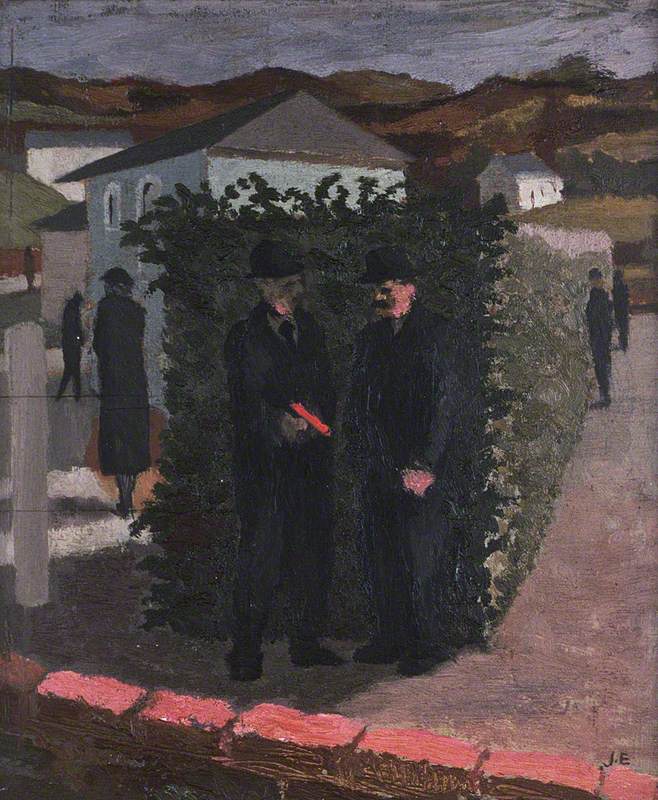
John Elwyn was motivated by Honoré Daumier's commentaries on life and manners in nineteenth-century Paris – notably his ability to portray character through gesture. However, John Elwyn's use of softened forms, mellow light, short brushstrokes and decorative broken colour recall paintings by Pierre Bonnard and Édouard Vuillard, whose work he had admired as a student in London.
John Elwyn's chapel paintings are remarkable examples of social observation; the two largest and most fully worked – Before the Meeting, also known as Suliau Mebyd (Sundays of my Youth), and Bore Sul – were both painted in 1950 and exhibited at the National Eisteddfod that same year.
In Bore Sul, poet John Ormond recognised his 'Uncle Willie Beynon with his bowler and heavy moustache. A lovely picture, calm, rural peace, the smell of Sunday gravy coming out of keyholes and back doors to arise to whet the appetites of the deacon and drunkard on the hungry, salad-serving clouds of heaven.'
Outside chapel, worshippers gather from neighbouring farms. For the women, it was the occasion to wear their Sunday best. In Before the Meeting, their posture, new hat, fur collar, handbag and hymnal held in a gloved hand are captured with affection, respect, and brogarwch – a Welsh word which conveys warmth for community, love of locality and regional character.
As war-time introspection continued well into the 1950s, British artists sought local workaday subjects for their paintings. John Elwyn turned to his experience of living in the coal mining community of Pontrhydyfen in the upper Swansea valley where he, as a pacifist and Conscientious Objector, had been directed to forestry work during the Second World War.
Miners Returning on a Wet Evening
(version III) 1953
John Elwyn (1916–1997) 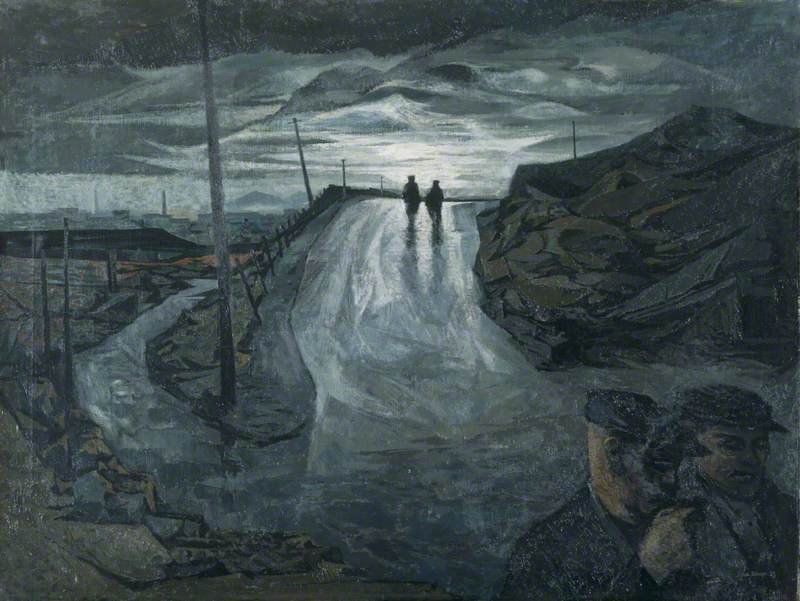
In the third version of Miners Returning on a Wet Evening (1953), weary rain-soaked colliers descend a track through wasteland scarred by industry. The last light glows above Port Talbot, where distant furnaces belch their noxious waste.
'To recall gazing into a sulphurous sunset,' John Elwyn wrote of these works, 'and seeing the rows of small, silhouetted figures of miners like insects with shadows and reflections scribbled on the wet roads making their way homewards to their tin baths in front of the kitchen fire, was a visual experience of the first order.'
Meanwhile, in The Mothers (1952) he introduces us to the women of the mining villages nursing their babies swaddled Welsh fashion in a fringed shawl, the sort produced at his father's mill and a familiar sight in the valleys until the 1960s.
The brooding sadness of John Elwyn's industrial landscapes eventually gave way to a more cheerful and optimistic panegyric of farming life. He explained the motivation for Carmarthenshire Green (exhibited 1957) had been fields 'surrounded by thick windswept hedges of blackthorn – where the dappled white-washed barn walls, dancing in and out of deep cast shadow, can be picked out on the hill slopes in the bright evening light – when the Dyfed greens are at their best and unique in their intensity – this quality of light lasts for a very short time.'
Windfalls (c.1956) was his attempt 'to paint the vivid and varied kinds of greens seen during a brilliant sunny spell following a heavy downpour in August in Cardiganshire. Storom Awst is occasionally accompanied by a whipping wind which is cruel to the heavily laden apple trees, causing them to shed tears of vivid emerald green. These tears are then gathered by the gossipy villagers as the first worthwhile windfalls of the year.'
By the end of the 1950s, John Elwyn's figurative subjects gave way to pure landscape. The strong geometrical aspects of patterned landscapes divided into fields with hedgerows and stone walls appealed to his sense of design. Off the Main Road II (1959) exemplifies the fractured decorative surfaces he created by juxtaposing landforms and vernacular architecture.
As compositions became more economical and the formal passages more predominant, John Elwyn began to use nature more selectively. From 1962, he developed abstract compositions that were an imaginative transformation of natural elements; their origins, however, remained firmly within his experience and based on observation.
On visits to his sister's sawmill in the Teifi Valley, he observed large trees sliced into large planks. In paintings such as The Sawmill III (1965), he sought equivalences to the routine slaughter of large trees, drawing analogies between chunks of animal flesh and newly sawn discs of beech. When sliced, the deep ambers and hot reds were radiant for just a few moments before the colours faded away.
John Elwyn's lifelong fascination with the cycle of the seasons, and their bearing on rural communities, led him to the poetry of Dylan Thomas. Like John Elwyn, Thomas had discovered his passion for nature, in all its diversity, during his childhood in Wales.
Thomas's poem Fernhill (1946) – John Elwyn's favourite, which famously begins: 'And as I was young and easy under the apple boughs, about the lilting house and happy as the grass was green' – has become an archetypal romantic poem about landscape and childhood experience. In 1976 John Elwyn made a series of lyrical interpretations of the poem, such as Fernhill III: 'under the new made clouds', which were, like the poem itself, concerned with imagination, harmony, rhythm and form.
While John Elwyn consistently found inspiration in a familiar environment, his paintings of west Wales are anything but provincial. There is something significant in them beyond ordinary significance. John Elwyn's paintings reflect his Welsh heritage and empathy with the Welsh people, our language, literature, social traditions and a community spirit that would soon be under threat.
'All this had nothing to do with esoteric modern art,' he wrote, 'but simply autobiographical illustration. I have a parochial mind – sometimes today it's called regional. I agree with Benjamin Britten when he says, "the important things are the local things." '
Professor Robert Meyrick, writer and art historian, friend and biographer of John Elwyn
This content was supported by Welsh Government funding
Further reading
Robert Meyrick, John Elwyn: A Retrospective, National Library of Wales, 1996
Robert Meyrick, John Elwyn obituaries, The Times, 6th December 1997 and The Guardian, 1st January 1998
Robert Meyrick, John Elwyn, Lund Humphries, 2000
Robert Meyrick, 'Famous Amongst the Barns: the Cardiganshire landscapes of John Elwyn' in The Journal of the Ceredigion Antiquarian Society, XV:2, 2002, pp.89–104
